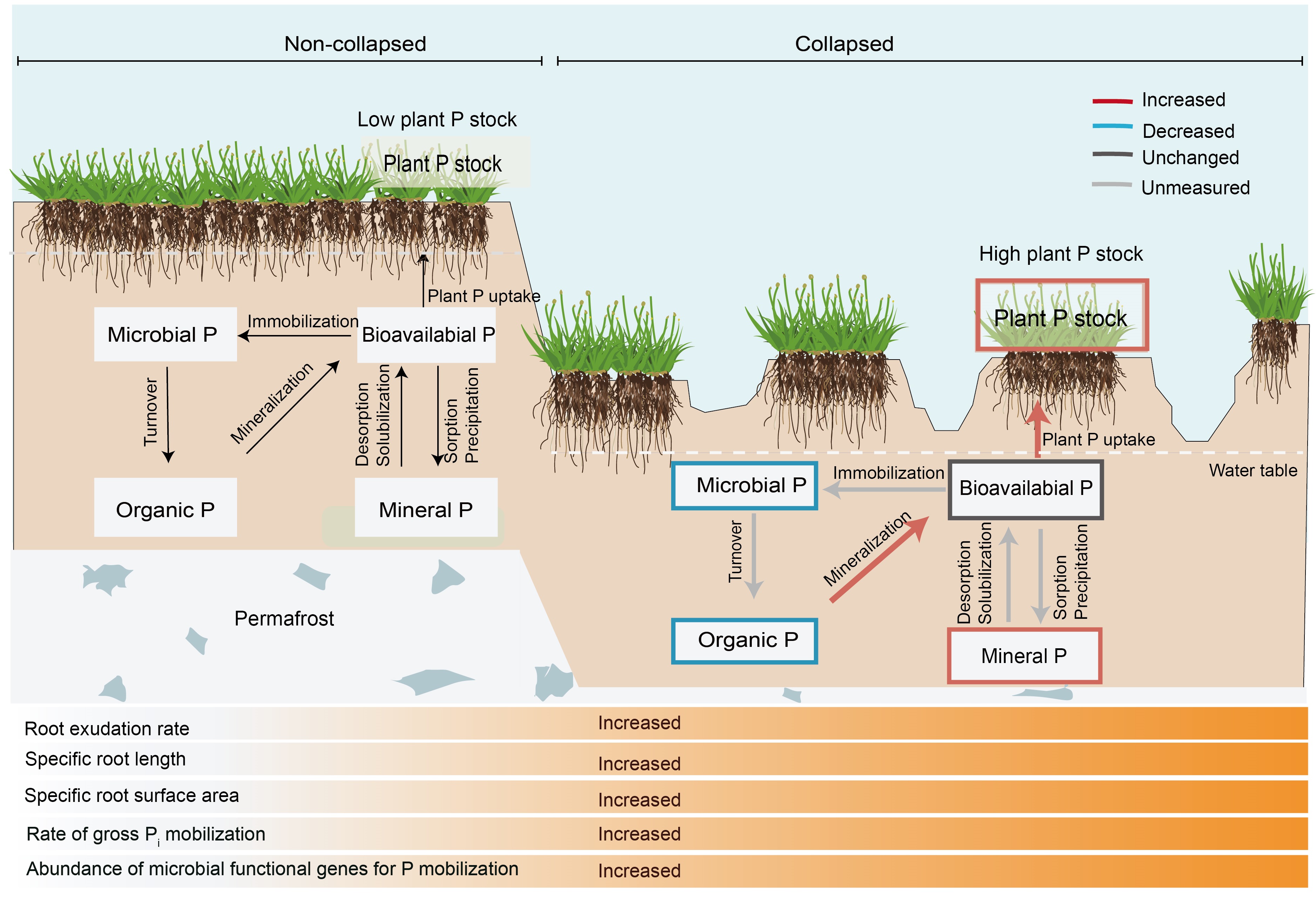
Permafrost thaw can stimulate the release of soil carbon, triggering a positive carbon-climate feedback that may be mediated by changes in soil phosphorus (P) availability.
A research team led by Prof. YANG Yuanhe from the Institute of Botany of the Chinese Academy of Sciences has reported that abrupt permafrost thaw accelerates soil phosphorus cycling, with potential consequences for plant primary productivity and carbon sequestration in permafrost ecosystems.
In this new study published in Nature Climate Change, the researchers investigated whether and how abrupt permafrost thaw affects soil phosphorus transformation processes and plant phosphorus uptake, presenting clear evidence that it accelerates soil phosphorus cycling.
Through large-scale sampling across a Tibetan Plateau permafrost transect combined with 31P nuclear magnetic resonance spectroscopy, 33P labeling, and metagenomic sequencing, the researchers discovered that soil phosphorus mobilization rates and plant phosphorus uptake increase after permafrost collapse.
Further analysis linked the increase in gross rates of phosphorus mobilization to a higher abundance of P-cycling functional genes.
Additionally, enhanced plant phosphorus uptake coincides with changes in root morphology, increased root exudation and reduced microbial competition with plants upon permafrost collapse.
Although permafrost thaw is generally considered to convert the frozen carbon pools from stable sinks into potential "carbon bombs", this study shows that the same process also accelerate ecosystem phosphorus cycling, thereby enhancing ecosystem primary productivity and carbon sequestration.
These findings provide critical insights for accurately predicting the fate of permafrost carbon and for developing strategies to mitigate its impacts in climate-sensitive regions.

Conceptual diagram showing the accelerated soil P cycling upon abrupt permafrost thaw (Image by LI Ziliang)

86-10-68597521 (day)
86-10-68597289 (night)

52 Sanlihe Rd., Xicheng District,
Beijing, China (100864)

